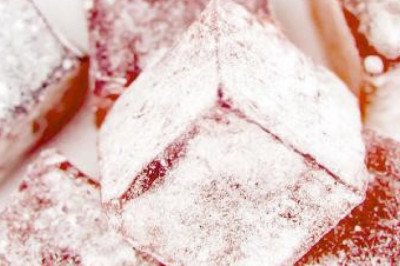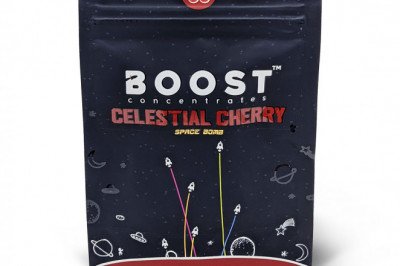views
The bio-polylactic acid market size is forecast to reach US$1.4 billion by 2027, after growing at a CAGR of 14.5% during the forecast period (2022-2027). The bio-polylactic acid is primarily manufactured through the process of direct condensation polymerization, azeotropic dehydrative condensation, and lactide formation polymerization. It can be degraded by numerous microorganisms using their secreted enzymes such as serine protease, cutinases, lipases, and bacillus licheniformis by hydrolysis reaction. They are used in a wide range of applications which include plastic films and sheets for packaging, automotive, textiles, medical, construction, electronics, and more. According to recent insights published on Interpack in 2020, the global packaging industry is expected to grow by an annual rate of 3.5% within the next four years. An increase in demand for bio-polylactic acid from the packaging, automotive, and textile industries acts as the major driver for the market. On the other hand, high costs associated with bio-polylactic acid may confine the growth of the market.
Bio-polylactic Acid Market COVID-19 Impact
There is no doubt that the COVID-19 lockdown has significantly reduced manufacturing, and production activities as a result of the country-wise shutdown of manufacturing sites, shortage of labor, and the decline of supply and demand chain all over the world, thus, affecting the market. Studies show that the outbreak of COVID-19 sharply declined the production of raw materials in 2020 due to a lack of operations across multiple countries around the world. However, the COVID-19 pandemic has increased the demand for packaging all over the world. For instance, recent insights from Flexible Packaging states that the food packaging industry witnessed a sharp increase in demand during the pandemic due to the high number of consumers turning into online groceries shopping. By the end of 2021, U.S. online grocery sales accounted for 12.4% of the country’s overall e-commerce sales. It further states that the U.S. digital grocery buyers grew up to 137.9 million in 2021, a growth of 4.8% in comparison to 2020. Supermarkets witnessed a huge surge in demand for packaging materials for the wrapping of food and other grocery products. Hence, such an increase in demand for packaging is expected to increase the demand for bio-polylactic acid as it is primarily used in the production of plastic films and sheets used for packaging. This is most likely to lead to market growth in the upcoming years.
Report Coverage
The report: “Bio-polylactic Acid Market Report – Forecast (2022-2027)”, by IndustryARC covers an in-depth analysis of the following segments of the Bio-polylactic Acid Industry.
By Raw Materials: Corn, Cassava, Sugarcane, Others.
By Production Process: Direct Condensation Polymerization, Azeotropic Dehydrative Condensation, Lactide Formation Polymerization.
By End-Use Industry: Packaging, Automotive, Textiles, Medical, Construction, Electronics, Agriculture, Others.
By Geography: North America (USA, Canada, and Mexico), Europe (the UK, Germany, France, Italy, Netherlands, Spain, Russia, Belgium, and the Rest of Europe), Asia-Pacific (China, Japan, India, South Korea, Australia, and New Zealand, Indonesia, Taiwan, Malaysia, and the Rest of Asia-Pacific), South America (Brazil, Argentina, Colombia, Chile and the Rest of South America), the Rest of the World (the Middle East, and Africa).
Key Takeaways
- The packaging industry in Bio-polylactic Acid Market is expected to see the fastest growth, especially during the forecast period. Its wide range of characteristics, biodegradability, low energy consumption, and cost-efficiency is driving its demand for the production of plastic films and sheets used in the packaging industry.
- Properties of bio-polylactic acid such as durability, printability, flexibility, UV resistance, transparency, biodegradability, chemical resistance, and more make it ideal for use in a wide range of industries which include packaging, automotive, and textile industries.
- Asia-Pacific dominated the Polyethylene Wax Market in 2021, owing to the increasing demand for polyethylene wax from the packaging sector of the region. According to a recent study published on Interpack, Asia accounted for the highest world share of packaging sales in 2020, an increase of 7.4% in comparison to 2019.
Bio-polylactic Acid Market Segment Analysis – By Raw Material
The sugarcane raw material held a significant share in the Bio-polylactic Acid Market in 2021, owing to its increasing demand due to the characteristics and benefits it offers over other types of raw materials. Bio-polylactic acid derived from sugarcane composites provide better resistance to moisture, chemical resistance, impact resistance, and UV resistance in comparison to other types of raw materials. Moreover, bio-polylactic acid derived from sugarcane composites tends to be more flexible and durable in comparison to corn, cassava, and other types of raw materials. In addition to this, they are more economical and cost-effective. Hence, all of these properties are driving its demand for the production of bio-polylactic acid over other types of raw materials, which in turn, is expected to boost the market growth in the upcoming years.
Bio-polylactic Acid Market Segment Analysis – By End-Use Industry
The packaging industry held the largest share in the Bio-polylactic Acid Market in 2021 and is expected to grow at a CAGR of 14.6% between 2022 and 2027, owing to its increasing demand from the packaging industry. According to PMMI (The Association for Packaging and Processing), the North American beverage industry is expected to increase by 4.5% from 2018 to 2028, with the United States leading the beverage packaging sector. Likewise, recent insights from the Packaging Federation of the United Kingdom states that the UK packaging manufacturing industry reached an annual sales of GBP 11 billion (US$ 15.2 billion) in 2020, owing to the increasing demand for packaging from multiple sectors of the region.
In this way, an increase in demand for packaging activities is expected to increase the demand for bio-polylactic acid during the production of plastic films and sheets required for packaging. This is most likely to drive the growth of the market during the forecast period.
Bio-polylactic Acid Market Segment Analysis – By Geography
The Asia Pacific held the largest share in the Bio-polylactic Acid Market in 2021 up to 30%. The consumption of bio-polylactic acid is particularly high in this region due to its increasing demand from the packaging industry. For instance, China holds the largest market share around the world when it comes to food packaging. According to a recent study published on Interpack, the consumption of food packaging is expected to increase to 447,066 million in 2023. Likewise, it also states that the Chinese packaging companies such as 3D, SIP, and WLCSP alone achieved a revenue of around US$5.88 billion with end packaging.
According to the Packaging Industry Association of India, the Indian packaging industry was valued at around US$ 50.5 billion in 2019 and is expected to increase up to US$ 204.81 billion by the end of 2025. It further states that packaging is considered to be one of the industries with high growth in India and is rising at 22-25% per year. Thus, the surging growth of the packaging sector in the region is expected to increase the demand for bio-polylactic acid as a primary medium for the production of plastic films and sheets required for packaging. This is expected to accelerate the market growth during the forecast period.
Bio-polylactic Acid Market Drivers
An increase in automotive production is most likely to increase demand for the product
According to a recent study published by the German Association of Automotive Industry during the fourth quarter of 2020, the new registration of motor vehicles reached up to 16,763 units in Europe, 37,467 units in Asia, 3080 units in South America, 17,421 units in North America, 12,733 units in Western Europe, and 5180 units in other regions worldwide. Likewise, a recent study published by the International Netherlands Group (ING) states that the demand for the production and development of Electric Vehicles has been increasing since the pandemic. It states that the global sales of new Electric Vehicles have increased by 50% in 2021, and it is expected to increase by 8% in 2022. It further states that the sales of Electric Vehicles have increased by 14% in Europe, 9% in China, and 4% in the US.
Bio-polylactic acid is commonly used in various components of the automobile interior which include mats, carpeting, and upholstery. Hence, an increase in automobile production is expected to increase the demand for bio-polylactic acid, leading to the growth of the market in the upcoming years.
An increase in demand from the textile industry is most likely to increase demand for the product
Bio-polylactic acid fibers are commonly used in the textile industry, owing to their properties such as smooth surface, controlled crimp, UV resistance, chemical resistance, low moisture regain along with good thermal and tensile properties. For instance, in July 2021, India announced the Non-Woven Fabric Manufacturing Expansion Project worth INR 220 million (US$ 2.9 million) in Himachal Pradesh. A recent article published on fibre2fashion states that Vietnam’s garment manufacturing business accounts for around 70% of the majority of businesses. It also states that the import of textiles and clothing by the United States increased by 26.79 % up to US$41.689 billion during the initial five months of 2021. Likewise, the value of U.S. man-made fiber, textile, and clothing shipments reached about $64.4 billion in 2020. Furthermore, in 2021, United Nations Environment Programme (UNEP) announced the commencement of a new project that is targeted to provide the approval of eco-innovation along with the use of Product Environmental Footprint (PEF) within textile SMEs in Kenya, South Africa, and Tunisia.
In this way, an increase in demand for various textile operations across the world is expected to increase the demand for bio-polylactic acid fibers, owing to its above-mentioned properties. This is most likely to drive market growth in the upcoming years.
Bio-polylactic Acid Market Challenges
High cost of bio-polylactic acid may cause an obstruction to the market growth
Bio-polylactic acid plastic is a common alternative to conventional petrochemical-based plastics which is also environmentally friendly, however, its production process is quite costly. The production process for bio-polylactic acid is expensive due to the number of intermediate steps involved in the production process. In traditional bio-polylactic acid production, lactic acid is fed into a reactor which converts it into a type of pre-plastic, low-quality, material under high temperature in a vacuum. The pre-product is then broken down into building blocks for bio-polylactic acid. These intermediate steps also involve the use of metals and produce waste. Thus, these intermediate steps make bio-polylactic acid plastic more expensive in comparison to traditional petroleum-based plastics, and it also has less mechanical and physical properties. For instance, the price of bio-polylactic acid plastic films costs around US$ 1.65/kilogram while the price of traditional petroleum-based plastic films costs around US$ 1.47/kilogram. Hence, high costs associated with the production of bio-polylactic acid may confine the growth of the market.
Bio-polylactic Acid Industry Outlook
Technology launches, acquisitions, and R&D activities are key strategies adopted by players in the Bio-polylactic Acid Market. Bio-polylactic Acid Market top 10 companies are:
- NatureWorks LLC
- Sulzer Ltd
- Futerro
- Zhejiang Hisun Biomaterials Co. Ltd.
- Total Corbion PLA
- Nantong Jiuding Biological Engineering Co. Ltd.
- Jiangxi Keyuan Bio-Material Co. Ltd Inc.
- Musashino Chemical Laboratory Ltd.
- Polysciences Inc.
- BASF SE
Recent Developments
- In January 2022, Sulzer Ltd announced its plan to deliver a customized production technology to NatureWork’s latest biopolymer manufacturing facility which will be located in Thailand. The main motive of this development is to increase the company’s production capacity up to 75, 000 tons of polylactic acid (PLA) per year in order to meet the surging demand for PLA in applications such as food packaging.
- In September 2021, LG Chem, and ADM, signed a memorandum of understanding (MoU) in order to explore the production of lactic acid in the U.S. to meet the increasing demand for a wide range of plant-based products, including bioplastics.
- In October 2020, Futerro launched its first fully-integrated PLA plant in China. The new lactic acid and PLA units include new patented technologies for the production of high-quality products at reasonable costs. The PLA unit has an overall capacity of 30,000 tons per year followed by a lactic acid unit with an overall capacity of 80,000 tons per year.
Relevant Reports
Bio-plastics Market – Forecast (2022 - 2027)
Report Code: CMR 0846
Lactic Acid Market – Forecast (2022 - 2027)
Report Code: FBR 0085
Bio-based Resins Market – Forecast (2021 - 2026)
Report Code: CMR 96317
For more Chemicals and Materials Market reports, please click here











